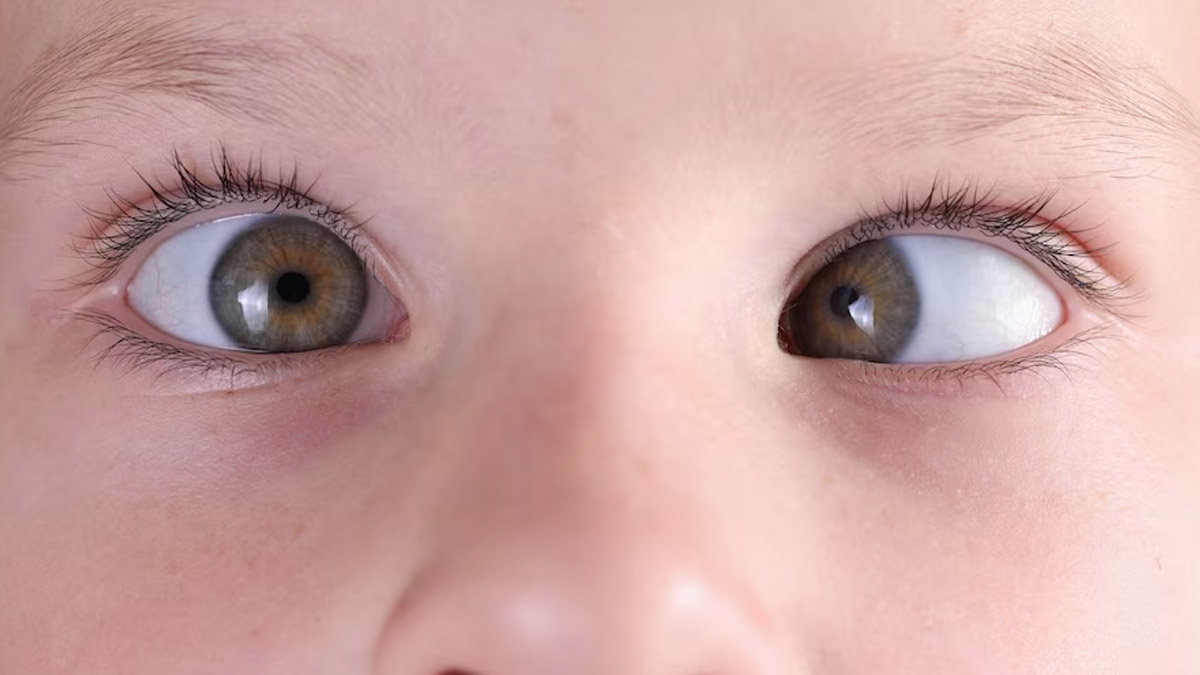
People with squint eyes experience a condition in which their eyes don't look at the same place at the same time. One eye may be focused forward, while the other is turned upward, downward, inward, or outward. This condition, also known as strabismus, usually occurs in children but can affect people of any age.
Table of Content:-
We spoke to Dr Ajay Sharma, Chief Medical Director, EyeQ, Super Speciality Eye Hospital, who explained squint eye, its causes, complications, and how it can be corrected.
The condition is related to a few ailments:
Esotropia: A condition in which the eye turns inward.
Exotropia: A situation in which the eye turns outward.
Hypertropia: A condition in which the eye turns upward.
Hypotropia: A condition in which the eye turns downward.
The condition may be intermittent, which means it occurs only for a few hours each day, or it may be constant, i.e., occurring throughout the day.
Causes Of Squint Eyes

- Weak eyesight and refractive error in youngsters.
- Non-refractive squint: It is an inherited neurological illness making eye muscles weak.
- In adults, its effects include nerve damage to the eye muscles and brain abnormalities.
- Diabetes and high blood pressure.
Also Read: Thyroid Eye Disease: Expert Explains Its Symptoms, Causes & Preventive Measures
Assessment Of Squint Eyes
Dr Sharma listed the steps involved in the assessment of squint eyes, which includes the following:
- The assessment includes collecting a thorough history and noting the presence of any systemic ailments.
- This is followed by a physical and eye examination.
- Eyesight is evaluated, and refractive powers, such as myopia (short-sightedness), hypermetropia (long-sightedness), and astigmatism (changes in corneal forms) are measured.
- Squinting and binocular vision are evaluated, followed by a retinal examination. Brain imaging may also be required.
How To Correct Squint Eyes

The basic treatment is based on four principles and phases.
- Refractive power correction is accomplished through a dilated examination and measurement of refractive power, followed by the prescription of glasses or contact lenses.
- The restoration of ocular alignment using prisms, surgery, or botox injections (in adults). This is done if ophthalmologists believe that spectacles alone will not rectify the ocular alignment.
- Eye exercises relieve diplopia and promote stereopsis. Home-Based Pencil Pushups (HBPP) are a good ocular alignment exercise.
- Amblyopia (lazy eye) is corrected by patching the normal eye, which stimulates the weak eye to work harder and improves eyesight.
Also Read: Waking Up With Swollen Eyes? Expert Explains Its Causes & Treatment
Things You Should Know
Parents should be aware of the following warning indicators and report them:

- If the squint is constant.
- If the squint is variable.
- Youngsters watching TV or reading books from a close proximity.
- Squeezing of the eyes, frequent eye rubbing by youngsters, and eye blinking or twitching.
Complications Due To Squint Eye
Ignoring the signs and symptoms results in a variety of consequences, some of which include:
- Permanent vision deterioration, resulting in lazy eyes
- A rise in squinting
- Later-life low self-esteem
- Adults fall owing to diplopia (double vision).
Dr Sharma highlighted that in adults, the greatest issue with squinting is the failure of the eye muscles to fixate on a specific object, resulting in diplopia, or double vision.
In youngsters, it can also result in a condition called amblyopia or lazy eye. This is caused due to the suppression of the damaged eye, leading to loss of vision, loss of stereopsis (depth perception), and blindness, which is nearly impossible to repair later in life.
Conclusion
You should not ignore these eye symptoms as they can even lead to vision loss if left untreated. It is advisable to have a yearly eye checkup for the health of your eyes. The treatment will be more effective if the patient is younger or the checkup is done at the earliest.
Also watch this video
How we keep this article up to date:
We work with experts and keep a close eye on the latest in health and wellness. Whenever there is a new research or helpful information, we update our articles with accurate and useful advice.
Current Version
